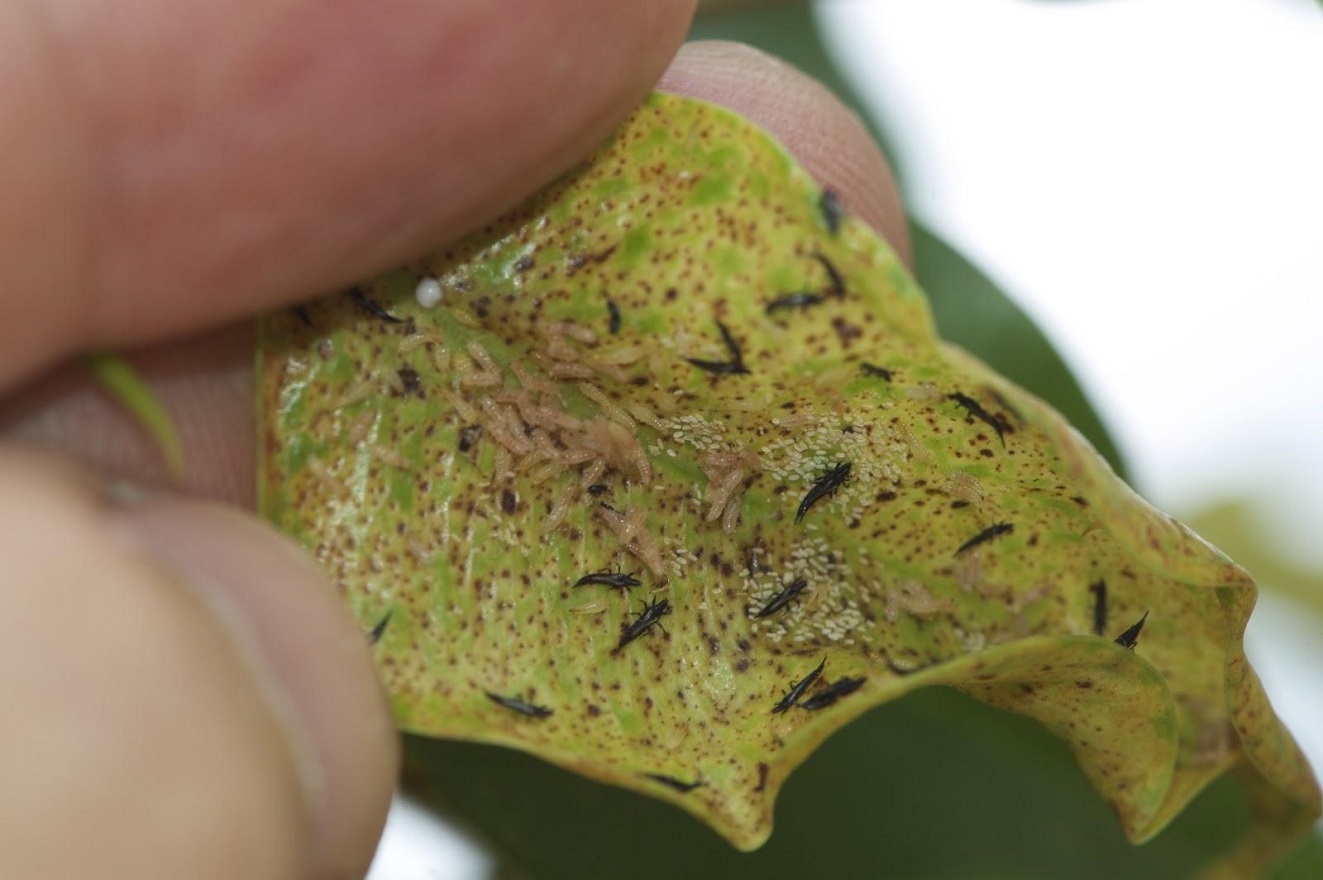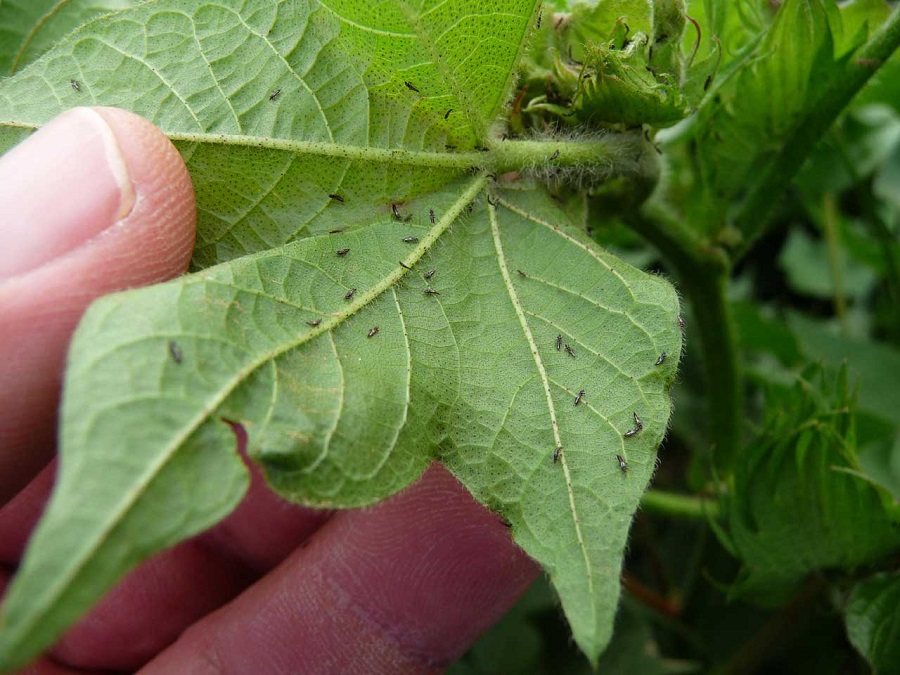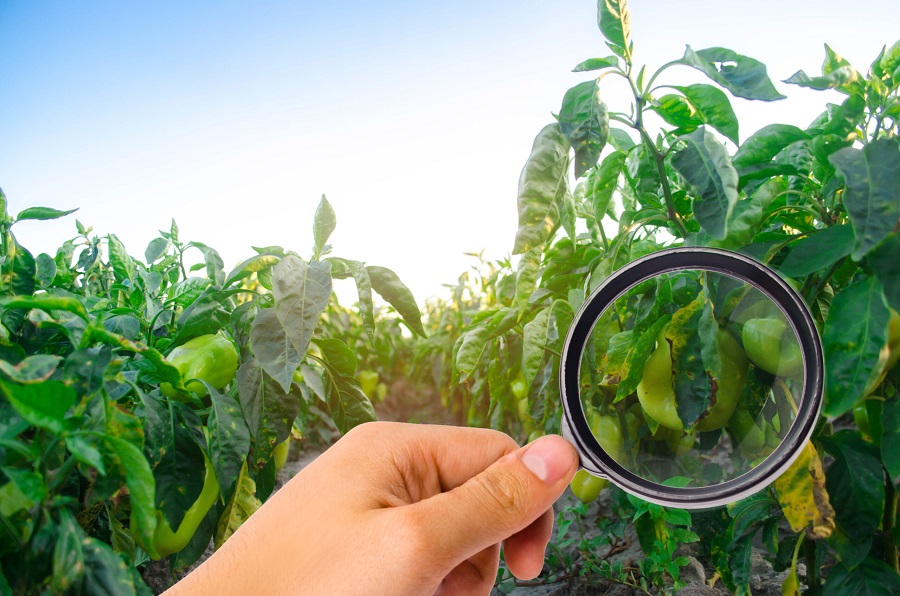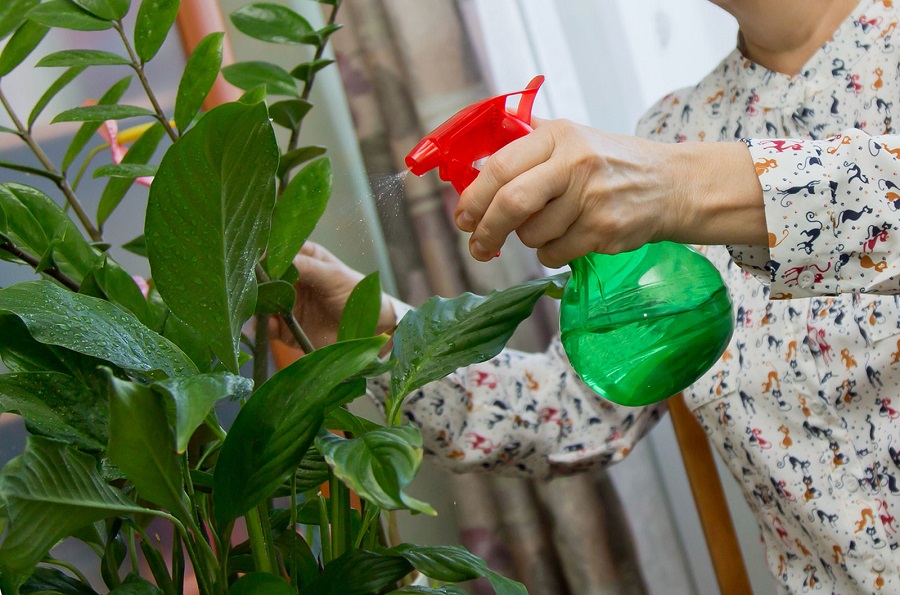Thrips Control Methods - How to Get Rid of Thrips on Plants?
Thrips are tiny insects, and it's quite difficult to spot them on plants' leaves and flowers. They are 1-2 mm long, depending on the variety. Despite the small size, they can cause a lot of damage if they invade houseplants or vegetable crops. They mostly attack the mentioned leaves and flowers, and their larvae live in the soil, where they morph into adult insects. Check how to get rid of thrips.

What are thrips?
Thrips are a group of insects with piercing-sucking mouth type. These pests feed on plant juices and tissues. Thrip larvae can hibernate in soil. For this reason, it’s easy to infect houseplants with them.
Because of their small size, the insects can be easily overlooked by a plant’s owner. You can notice their presence when the infected plant becomes visibly ill - it appears through leaves and flowers.

What types of thrips attack plants?
There are a few types of thrips, so make sure you know how to identify thrips on houseplants. The dracaena thrips are the most commonly encountered pests. They feed on figs, palms and ivies. They’re tiny - only 1.5 millimeter-long and yellow-brown.
The greenhouse thrips is another common type of these small insects. Just like the previously mentioned pests, they reach only 1.5 millimeters of length, but their color is uniform brown. They typically attack imported plants - their larvae lie buried in soil.
The tobacco thrips are even smaller - their maximum length is 1.2 millimeters. They are yellow in spring and summer, and turn to brown in autumn. This type of thrips often feed on pinks, gerbera daisies and chrysanthemums.
The western flower thrips is probably the most dangerous type of these pests. They attack both decorative plants and vegetables. It spreads TSWV, a virus which causes degeneration of infected plants. The insects multiply quickly, and worse - they are difficult to get rid of. It’s one of the largest thrips in this group, reaching up to 1.7 millimeters of length. They are yellow and orange in spring and summer, while they turn brown in autumn.

How to identify thrips on houseplants and garden plants?
Because thrips are so tiny, noticing any changes in the plant is the best way to identify these pests. Leaves and flowers usually are the best indicators of thrips’ presence. The most common signs include:
- relatively small light spots,
- deformed flowers,
- silvery surface on leaves.
The symptoms are many, and they are not always obvious.
There is a good method of checking whether thrips attacked your plant - place a white paper sheet under a leaf and shake it. If tiny fast-moving “lines” fall on the paper, you can be sure they are thrips.
Thrips on plants - where do they come from?
Are you wondering why there are thrips on your plants? Their larvae morph into adult insects in soil. That’s why they are typically introduced - often unconsciously - by repotting or bringing new plants home.

What plants are usually damaged by thrips?
Are you not sure what plants are the most vulnerable to thrips? Monstera is often attacked by these pests. Keep in mind, though, that this insect appears on many species. Houseplants are its typical target, but you can also encounter thrips on:
- ornamental plants,
- vegetables,
- greenhouse plants.
Regardless where they appear, make sure to follow certain steps to fight them off. Thrips are among the most difficult pests to get rid of, so time is crucial, in this case.
How to get rid of thrips - homemade solutions
Homemade thrips remedies involve preventing certain dangerous situations from occurring. Watering the plant regularly is one of the methods. This pest doesn’t like high humidity and doesn’t attack plants that prefer shade and humid soil. What’s more, certain mosquito repellents might repel thrips as well.
Unfortunately, if the plant gets attacked by thrips, home remedies aren’t effective enough to help in such a case. That’s why chemical thrips control insecticide is a much better idea, combined with utilizing tips received from experienced gardeners.
How to kill thrips with chemicals - which products are the best?
If you want to get rid of thrips effectively, you need good insecticides. Keep in mind that products used on houseplants cannot always be used on vegetables. You can purchase products for both types of plant in a gardening store - physical or online. Ask the specialist selling these products which thrips control insecticide is the best in your case.

📍 Are there thrips on my plants?
Thrips usually attack flowers, leaves and other nooks of a plant. They feed on the plant juice, which they extract using their piercing-sucking mouths. Because of their small size, thrips are difficult to spot.
📍 How to recognize thrips damage?
Thrips on plants cause different types of damage, sometimes quite unusual, e.g. white spots, a silvery surface. You can typically spot signs of these pests on leaves and flowers. Where do thrips typically appear? Monstera is one of their most common target.
📍 Thrips control - what do thrips hate?
Thrips on roses and other plants are an exceptionally bothersome problem. They damage flowers and leaves. If you want to repel them, make sure to water the plant regularly. These insects dislike humidity.
📍 How to kill thrips?
Special products designed to kill thrips are the best remedy for an infestation of these insects. You can purchase a thrips insecticide in a gardening store. Consult a shop assistant about which product to choose - to make sure it will get rid of the bothersome pests.
Featured articles




